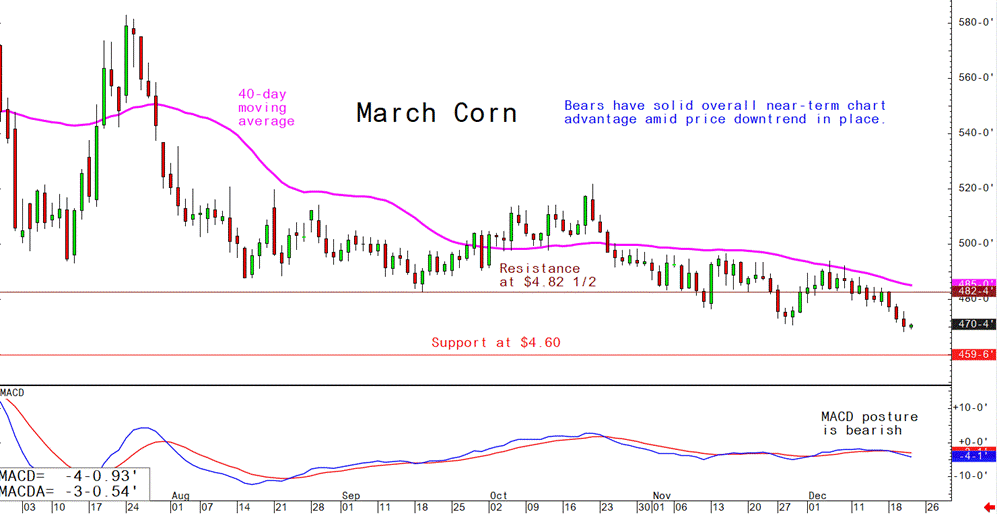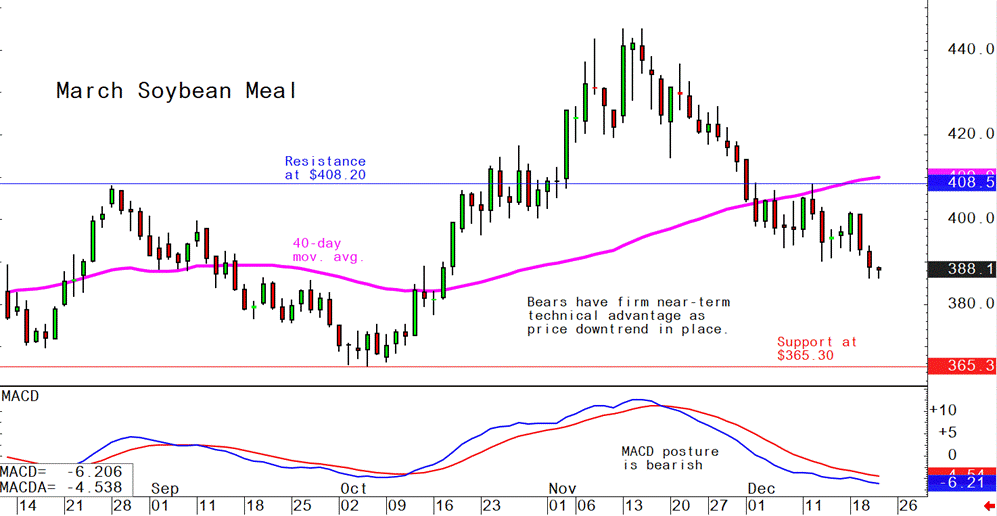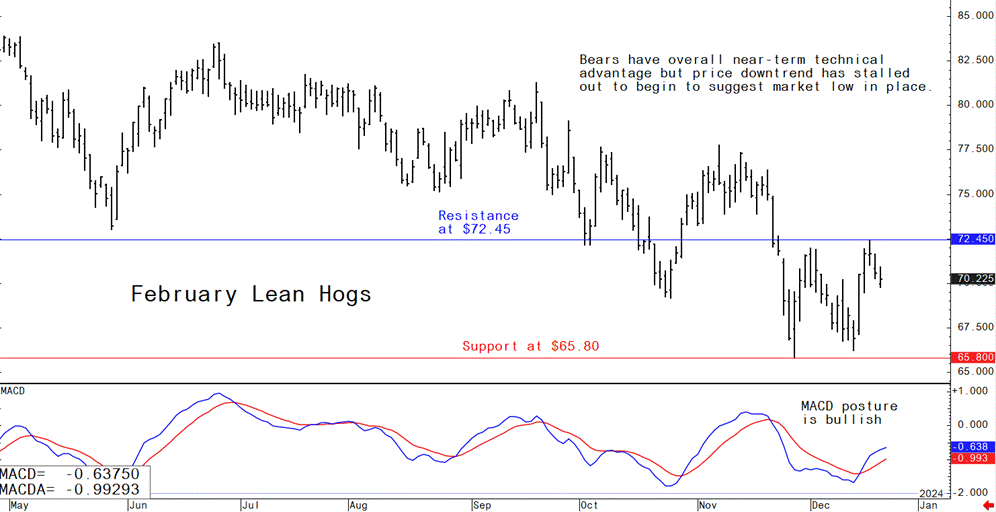



Pig outlook — Lean hog futures bulls work to forge market bottom
Livestock analyst Jim Wyckoff shares global swine newsLean hog futures prices the past three weeks have seen choppy trading at lower price levels, which begins to suggest a market bottom is in place. However, the bulls have more work to do to confirm such and to suggest a price uptrend can be sustained. The latest CME lean hog index is up 17 cents to $66.54 (as of Dec. 19). It’s also going to take sustained price gains in the cash index to convince traders a seasonal low is in place.
US hog and pork supplies are near annual highs and US pork demand is uncertain with retailers likely having completed all their purchases for planned year-end holiday features. Pre-report surveys for Friday’s USDA quarterly USDA Hogs & Pigs report show analysts expect the December U.S. hog population and market hog numbers to fall 0.5% below year-ago levels, with a record-large number of pigs saved per litter during the fall quarter expected to fall short of the year-to-year drop in sows farrowing, thereby producing a fall pig crop 1.7% below year-ago levels.
Weekly USDA US pork export sales
Pork: Net US sales of 37,500 MT for 2023 were up 33 percent from the previous week and 48 percent from the prior 4-week average. Increases primarily for Mexico (15,900 MT, including decreases of 200 MT), South Korea (7,000 MT, including decreases of 2,400 MT), Canada (3,200 MT, including decreases of 700 MT), Japan (3,000 MT, including decreases of 1,200 MT), and China (2,800 MT, including decreases of 200 MT), were offset by reductions for the Philippines (100 MT), Vietnam (100 MT), and Hong Kong (100 MT). Net sales of 25,500 MT for 2024 were primarily for China (11,000 MT), Mexico (4,700 MT), South Korea (3,400 MT), Japan (2,600 MT), and Australia (900 MT). Exports of 40,500 MT--a marketing-year high--were up 12 percent from the previous week and 26 percent from the prior 4-week average. The destinations were primarily to Mexico (12,500 MT), South Korea (11,900 MT), Japan (3,900 MT), China (3,300 MT), and Canada (2,100 MT).
USDA sends two livestock market rules to OMB for review
USDA's Agricultural Marketing Service has submitted two additional proposed rules concerning livestock market matters to the Office of Management and Budget (OMB) for review. The first rule focuses on "Unfair Practices, Undue Preferences, and Harm to Competition Under the Packers and Stockyards Act." It aims to revise regulations under the Packers and Stockyards Act to provide clarity regarding violations of the Act. Furthermore, it seeks to clarify the Act's scope to determine actions or conduct that could be in violation of the Act, even without evidence of harm or likely harm to competition. USDA's position is that the Act should primarily address cases involving harm to competition.
China’s Nov. pork imports down sharply from year-ago
China imported 90,000 MT of pork during November, unchanged from the previous month but 48.1% less than last year. During the first 11 months of this year, China imported 1.46 MMT of pork, down 6.3% from the same period last year.
EPA proposes new US wastewater rules for meat and poultry processing plants
Such rules could lead to a reduction of 100 million pounds of water pollutants like nitrogen and phosphorus annually. This marks the first update of effluent limitation guidelines for this industry in a generation. The proposed guidelines aim to achieve the maximum feasible reduction in pollution using proven technology, considering economic viability. EPA plans to open the proposed regulations for public comment after their publication in the Federal Register. As part of a court agreement, the EPA is obligated to finalize the standards by August 2025, following a lawsuit filed by environmental law firm Earthjustice during the Trump administration when the EPA had decided against updating the regulations.
Agri Stats: Data-driven meatpacker efficiency raises collusion concerns
Agri Stats, an Indiana-based company, is known for its data-driven approach to assist meatpackers in optimizing efficiency and maintaining low prices. They collect and analyze extensive data to provide insights and recommendations to their clients in the meat processing industry. However, the government has raised concerns that the data provided by Agri Stats could potentially enable companies to engage in collusion. According to a Wall Street Journal profile, the company's client list has been substantial, including up to 97% of the U.S. chicken industry, valued at around $60 billion, and 80% of pork processors. This profile highlights the significant role Agri Stats plays in the meat industry's operations and pricing strategies.
The next week’s likely high-low price trading ranges:
February lean hog futures--$65.80 to $74.00 and with a sideways bias
March soybean meal futures--$365.30 to $405.00, and with a sideways-lower bias
March corn futures--$4.50 to $4.85 and a sideways-lower bias
Latest analytical daily charts lean hog, soybean meal and corn futures












